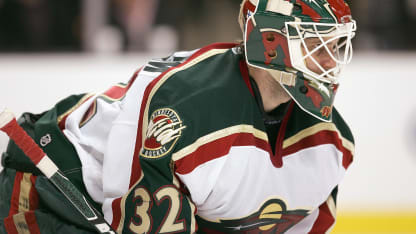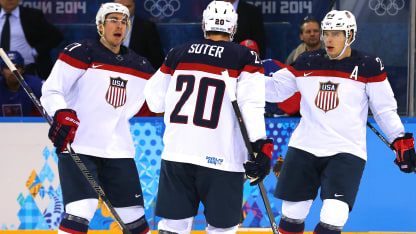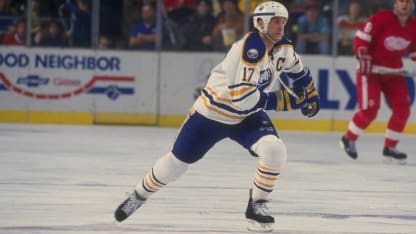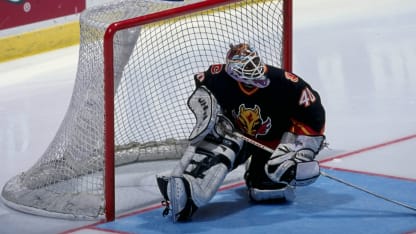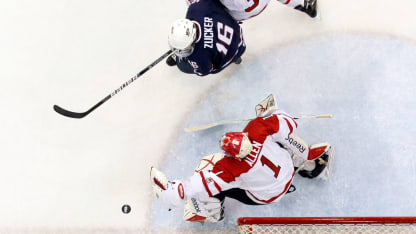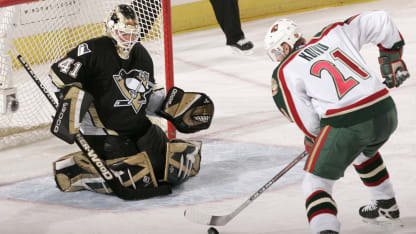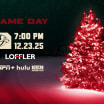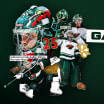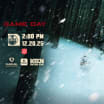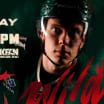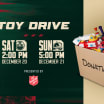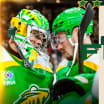"We'd become pretty close, so I said, 'Don't worry, I'll keep 32 for you for as long as I can,'" DaCosta said.
A week later, the Wild signed goaltender Alex Stalock, who not only wore No. 32 in his lone previous NHL stop in San Jose, but also in college at the University of Minnesota Duluth.
"I tried to talk him into something else," DaCosta said. "So I called Backy back and I said, 'Well, it lasted a week, buddy.' And he was like, 'Hey, thanks a lot!'"
While some players don't have a preference in terms of their jersey number -- or at the very least are low maintenance about it -- for others, it's a very big deal.
Some players will take whatever integer they're given, while others will move Heaven and Earth to try and get their preferred digits on the back of their sweater.
For a bulk of NHLers, receiving their favorite number isn't always easy. At some point, a player enters the League as a rookie, often competing in prospect development camps and training camps before ever skating in a game.
If that's the case, the odds that a player gets his druthers are relatively slim.
Charlie Coyle, for example, was assigned No. 63 during his first development camp with the Wild and carried it with him through his first training camp to his first NHL games.
DaCosta's rule of thumb for young players changing numbers? Make the NHL team out of training camp.
Because Coyle began his first pro season in the American Hockey League, he wore 63 when he made his NHL debut in February of 2013.
"You're just trying to make the team; you don't care what number] you have," Coyle said. "I'd take any number to play right away, and I knew it wasn't my spot to come in and want to change my number."
The following fall, when it became clear that Coyle would make the NHL team out of camp, DaCosta asked Coyle if he wanted to change to No. 3 -- the number Coyle had worn growing up -- for the start of the season.
Coyle's love of three began when he was a kid, when he first watched his dad wear it when he would play. As he got older, he watched his cousin, former long-time NHLer Tony Amonte, skate in No. 3 at Boston University, a uniform Coyle would one day himself sport.
But it was actually an Easter family gathering with Tony's dad, Lou, that got Coyle hooked on the number three.
Grandpa Lou told Coyle that three was his lucky number.
"I was born in March, the third month. My initials are CC, the third letter [of the alphabet]. I'm the third kid [in my family]," Coyle said. "So when you're a little kid, you're like, 'Oh my gosh, yeah, that is my lucky number.'"
Some players choose to keep their camp number.
***[Want more Wild headlines? [Sign up for e-News]*
Wild defenseman Jared Spurgeon had no previous ties to the number 46, but when the opportunity to change came up, he simply chose not to.
Spurgeon wore the number 18 in junior hockey, but when he signed with the Wild in 2010, Colton Gillies occupied those digits. Spurgeon began the 2010-11 season with the Houston Aeros, Minnesota's AHL affiliate at the time; when he was called up to make his NHL debut in November of that season, it was a complete shock.
The Wild was on the road when the call-up occurred. Normally, NHL teams travel with extra jerseys of players on their minor league teams, just in case they get recalled.
Spurgeon's addition to the NHL roster was so surprising, his jersey (officially No. 78) wasn't with the team in Calgary. So assistant equipment manager Rick Bronwell had to make a Jared Spurgeon jersey from scratch. He grabbed the jersey with the number 46 already on it, sewed on a 'Spurgeon' name plate, and voila.
It's stuck ever since.
"It was just good luck when I came up, so I figured why change it?" Spurgeon said.
The number has not taken over Spurgeon's life either. It's not as though all of his passwords suddenly have the number 46 in them.
To him, 46 is what he is at work, and that's about it.
"It's just there," Spurgeon said. "It's not my favorite number; it's just what I have."
Ryan Suter's No. 20 is one of the most popular jerseys on the backs of fans at Xcel Energy Center, but the 20 on the back of a Suter is nothing new.
His father, Bob, wore the number in the 1980 Olympics when he was a part of the "Miracle on Ice." Ryan Suter's uncle, Gary, had it during a 17-year NHL career with the Calgary Flames, Chicago Blackhawks and San Jose Sharks.
Ryan's brother, Garrett, wore it as a Division III player at the University of Wisconsin-Stevens Point.

